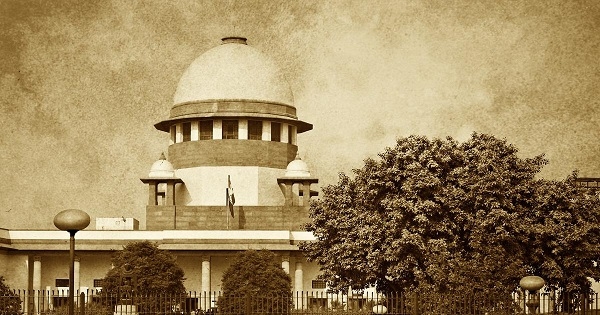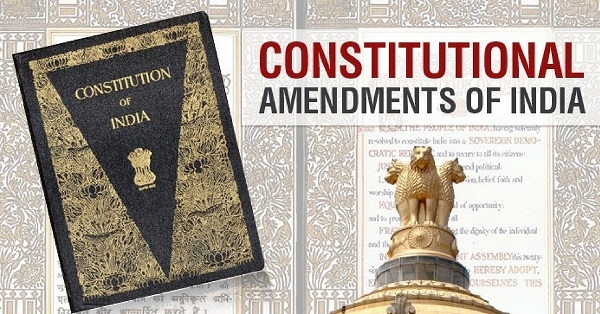Part III- Demolish the last remnant of the ‘black days’ of the yesteryear
09 Jun 2020 11:46:32
The basic structure of the Constitution was not mentioned by the bench and was left to the interpretation of the courts. The Courts need to see and interpret if a particular amendment violates the basic structure of our Indian Constitution or not
The turning point in judicial decision-making history was the famous: Kesavananda Bharati Sripadagalvaru case as following: Equivalent Citation – AIR 1973 SC 1461 Petitioner: Kesavananda Bharati Sripadagalvaru and Ors. Respondent: State of Kerala and Anr.: Date of Judgement: 24/04/1973. Bench: Sikri, S. M. (Cj) Shelat, J. M. Hegde, K.S. & Grover, A. N. Ray, & A. N. Reddy, P. J. Palekar, D. G. Khanna, Hans Raj Mathew, K. K. Beg, M. H. Dwivedi, S.N. Mukherjea, B. K. Chandrachud, Y. V. Referred Cases: 1. I. C. Golaknath & Ors. Vs. State of Punjab & Anrs.. .
The judgement: It was held by the apex court by a majority of 7:6 that Parliament can amend any provision of the Constitution to fulfill its socio-economic obligations guaranteed to the citizens under the Preamble subject to the condition that such amendment won’t change the basic structure of the Indian Constitution. The majority decision was delivered by S. M. Sikri CJI, K. S. Hegde, B. K. Mukherjea, J. M. Shelat, A. N. Grover, P. Jagmohan Reddy JJ. & Khanna J. Whereas, the minority opinions were written by A.N. Ray, D.G. Palekar, K.K. Mathew, M.H. Beg, S.N. Dwivedi & Y.V. Chandrachud.

The minority bench wrote different opinions but was still reluctant to give unfettered authority to the Parliament. The landmark case was decided on 24th April 1973. The court upheld the 24th Constitutional Amendment entirely but the 1st and 2nd part of the 25th Constitutional Amendment Act was found to be intra vires and ultra vires respectively. It was observed by the court in relation to the powers of the Parliament to amend the Constitution that it was a question that was left unanswered in the case of Golaknath.
The answer to the question was found in the present case and it was deduced by the court that the Parliament has the power to amend the Constitution to the extent that such amendment does not change the basic structure of the Indian Constitution. It was laid down by the court that the Doctrine of Basic Structure is to be followed by the Parliament while amending the provisions of the Constitution.
The Doctrine of Basic Structure: According to the doctrine, the Parliament has an unlimited power to amend the Constitution subject to the sole condition that such amendments must not change the basic structure of the Constitution. The Parliament should not in any manner interfere with the basic features of the Constitution without which our Constitution will be left spiritless and lose its very essence. The basic structure of the Constitution was not mentioned by the bench and was left to the interpretation of the courts. The Courts need to see and interpret if a particular amendment violates the basic structure of our Indian Constitution or not. The court found that as contended by the respondents actually there is a difference between ordinary law and an amendment.
Keshvananda Bharti’s case to some extent overruled Golaknath’s case. The court, in this case, answered the question which was left unanswered in Golaknath’s case in relation to the power of Parliament to amend provisions of the Constitution. The court found that the word ‘amend’ which was included in Article 368 does not refer to amendments that can change the basic structure of the constitution. If Parliament wants to amend a particular provision of the Constitution then such amendment would need to go through the test of basic structure.
It was also decided that since the Parliament has an unlimited power to amend the Constitution subject to the basic structure then Parliament can also amend Fundamental Rights as far as they are not included in the basic structure of the Constitution. 24th Amendment was upheld by the Bench whereas the 25th Amendment’s 2nd part was struck down.
The 25th Amendment’s validation was subjected to two conditions: The court agreed that the word amount and compensation is not equivalent to each other but still the amount which is provided by the Government to the landlords should not be unreasonable. The amount need not be equal to the market value but should be reasonable and closely related to the present market value. The 1st part of the 25th Amendment was upheld but it was subject to the provision that the prohibition of judiciary’s reach will be struck down.

Critical Analysis of the Judgement: The majority of the Bench wanted to preserve the Indian Constitution by protecting the basic features of the Constitution. The judgment was given after analyzing the various aspects and was based on sound reasoning. The Bench feared that if the Parliament would be provided with unlimited power to amend our Indian Constitution then the power will be misused and would be changed by the Government according to its own will and preferences.
The basic features and the very spirit of the Constitution can be altered by the Government if they have unlimited powers to make amendments. There was a need for a doctrine to preserve the rights of both Parliament and citizens, therefore, the Bench came up with a midway to protect both of their rights through the doctrine of Basic Structure.
Even before our Indian Constitution came into force, approximately 30 amendments were already made to it. After the commencement of the Indian Constitution in 1951, around 150 amendments have been passed, whereas, in the United States, only 27 amendments have been passed in 230 years. Despite the huge number of amendments, the spirit, and ideas of the framers of the Indian Constitution have remained intact. Indian Constitution did not lose its identity and spirit because of the decision taken by the Bench in this case.
The landmark case of Keshavananda Bharti provided stability to the Constitution. Though the petitioner lost his case partially, yet the judgment that was given by the Bench, in this case, worked out to be a savior of Indian democracy and saved the Constitution from losing its spirit. The most important issue that was deliberated was the history and role of the term called “preamble”. It is submitted that the preamble also is a commitment of the then Constituent Assembly to the people in the country who were working and representing the entire country, and who were left red when a captive house of the people in 1975-77, unilaterally deceived the nation.
It was a mockery of parliamentary democracy. The preamble is an inherent part of the basic structure of the Constitution and it cannot be tampered with or ignored. Demolish it now, since it is in the interest of the nation and its inherent democracy. Parliamentary democracy cannot be subverted. One cannot think of destroying democratic structure by deploying the same democratic weaponry. To avoid this situation, think of the ‘nation first’.(Concluded)
(The author has drawn most of the documentary material as it is from several sources including Wikipedia and the Supreme Court orders.)
Earlier parts of the article series-
